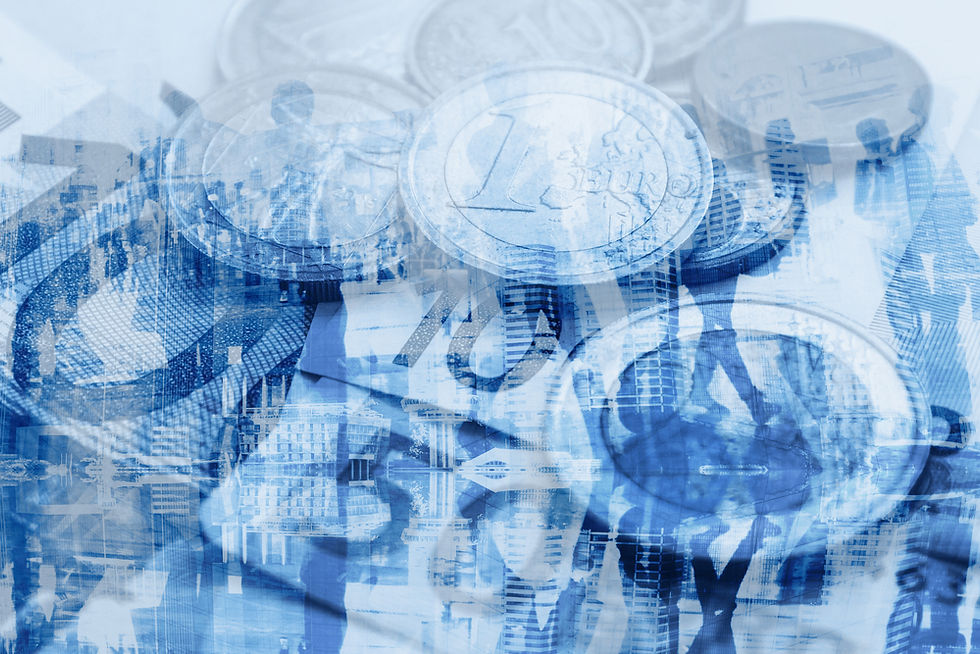Inflation is Still Misunderstood
- NYee
- Jun 20, 2022
- 4 min read

Sick of hearing about inflation yet?
Not us. And we’ve been talking about it for a while! Well, we always talk about it, because growth of purchasing power (and avoiding loss of purchasing power) is our primary rationale for long-term investing. But we’ve been talking about a major change in the inflation regime since July 2020 when we wrote:
“Still, if we look beyond the next 12-24 months, to a time when the pandemic is (likely) behind us, the effects of massive monetary and fiscal efforts may be more obvious.”
More obvious indeed. We also highlighted the blood pressure-like effects of even modest inflation, where 3% average inflation over a decade reduces the value of a dollar to 74 cents – a slow and quiet death of purchasing power.
To further underscore this point about how money loses value, look to our April 2021 post. In particular, scroll down to the section in italics that begins “inflation is a dangerously misunderstood term.” Americans who are old enough might remember the experience of the 1970s when official prices increased 7.3% per year on average(1) and the prevailing sense was that prices across the economy were pushed up by supply shocks. But the other side of that coin (eroding in value as it may be) is to recognize that the value of the currency is going down. And that it may be better to exchange some of that currency for something else that might better retain its purchasing power – especially if the rate of growth in the supply of that currency is outpacing the rate of growth in physical assets and goods and services available in the economy.(2) In America, we just don’t have any reference for the concept of currency debasement and loss of purchasing power. Unfortunately, I suspect we are going to learn what that means in the years ahead.
What’s remarkable today is that in spite of inflation running north of 8% for three months in a row, inflation is still misunderstood.
In July 2020, inflation was not visible and few took the prospect of inflation seriously. In July 2021, there was evidence of inflation in the official reported numbers but it was considered to be temporary. And by the way, with a hat tip to Ben Hunt at Epsilon Theory(3), here is one Federal Reserve governor’s perspective on inflation over the course of 2021:
“I expect some higher inflation measures in the next couple of months but that is different from underlying inflation levels reaching 2%. – Feb. 28, 2021
I am unconcerned with inflation running away from us. – April 5, 2021
I’m not worried about inflation getting out of control. – May 5, 2021
The Fed needs inflation expectations and real inflation to rise. – May 6, 2021
I’d like to see inflation rise to 2% or higher. – May 14, 2021
By the end of the year I expect inflation to be between 3.5% and 4%, with a drop in 2022. – Aug. 27, 2021
Inflation will be little more than 2% in the next years. – Sept. 24, 2021”
Side note: in the same piece from Ben Hunt you’ll find a quick review of the career activities of all the Fed presidents – most of whom are Federal Reserve system and/or academic lifers with little real world business experience. Meanwhile two Fed presidents resigned last year after conflict-of-interest violations related to investment trading. And investors continue to pray at the high church of the Federal Reserve. But I digress…
Back to inflation. Here we are, almost July 2022, and inflation is pervasive but still widely misunderstood:
“Yet, you will still not hear about the structural factors that are really behind the current inflation statistics, the ones that might drive 10 or 20 years of sustained, standard-of-living eroding inflation.”(4)
What are those factors?
“The fundamental problem that ensures an inflationary crisis either way…is the historic underinvestment in critical natural resource industries throughout the energy, materials, and agricultural sectors of the economy. We are convinced that both the investing public and policy making communities underestimate the significance of this capital investment shortfall and its implications… These are the commodities at the core of the supply chain for all goods and services.”(5)
Unfortunately, the underinvestment issue and resultant supply problems are not easily remedied. In some areas, natural shortages exist (e.g. elements like cobalt and dysprosium needed for electrification of the economy). In others, ecological impact is an impediment (these are after all primary resource extraction industries). Capex levels in these industries are inadequate to meet growing global demand.(6) That is unlikely to change any time soon.
What if global demand weren’t growing? That would be nice for both inflation and the planet. But it presents its own set of economic problems because the world economy is so highly leveraged. When the pandemic arrived we got a taste of what that scenario might look like: deflation and a lot less pollution, but a nasty economic shock that was greeted with incredible monetary and fiscal firepower…which led to the money supply increasing almost 40% over two years.
There are no good answers to this problem. But policy makers will almost assuredly opt for the path of least resistance. And that ultimately means more inflation.
https://www.bls.gov/data/inflation_calculator.htm - figure cited is for the period 1/1970 – 12/1979
https://fred.stlouisfed.org/series/M2SL - according to the Federal Reserve Bank of St. Louis, monetary aggregates referred to as M2 (or what’s now called M2SL) grew by almost 40% for the period 1/1/2020 – 12/31/2021
https://www.epsilontheory.com/ngmi/ - quotes are from Loretta Mester, President of the Federal Reserve Bank of Cleveland
https://horizonkinetics.com/app/uploads/Interim-Q1-Q2-Commentary-2022-with-TPL-addendum_FINAL.pdf
https://www.gmo.com/americas/research-library/1q-2022-gmo-quarterly-letter/



Comments